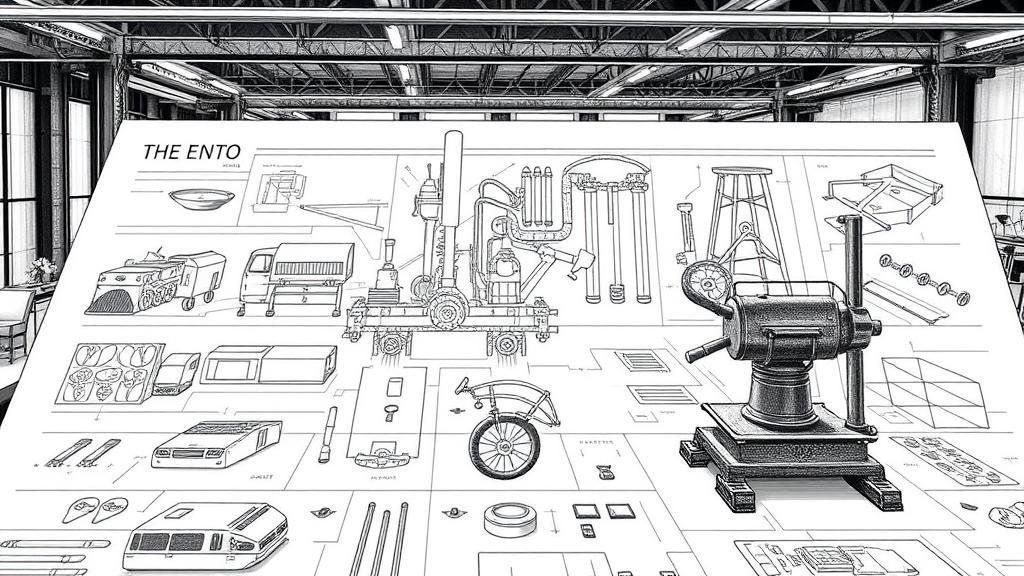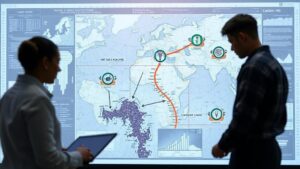How AI Enhances the Analysis of Industrial Artifacts in Early Factory Records
Introduction
The industrial revolution marked a pivotal moment in history, characterized by a significant shift from agrarian economies to industrialized ones. This transformation brought forth a plethora of artifacts that documented the operations, products, and culture of early factories. In recent years, artificial intelligence (AI) has emerged as a powerful tool in the analysis of these industrial artifacts, enabling researchers to glean insights that were previously difficult or impossible to achieve. This paper explores how AI enhances the analysis of industrial artifacts in early factory records, focusing on key technologies, methodologies, and case studies.
Historical Context
The first factories began to appear during the late 18th and early 19th centuries, particularly in regions such as Great Britain and the northeastern United States. These factories produced a range of goods, from textiles to machinery, and their records include a variety of documents such as ledgers, bills of lading, and employee records. For example, the Lowell Mills in Massachusetts, operational in the early 1800s, produced extensive records that chronicled the lives of the workers and the economics of production.
The Nature of Industrial Artifacts
Industrial artifacts can take many forms, including:
- Administrative documents (e.g., payrolls, contracts)
- Product design schematics
- Operational workflows
- Employee correspondence
These artifacts provide invaluable insights into the economic practices, societal impacts, and technological advancements of the time. But, the sheer volume and diversity of these records often make manual analysis inefficient.
Artificial Intelligence in Historical Analysis
Document Digitization
The first step in leveraging AI for historical analysis is the digitization of documents. Optical Character Recognition (OCR) technology plays a critical role in this process. For example, the papers of the American Industrial Revolution have been digitized using advanced OCR systems that can recognize and convert printed text into machine-readable formats. This transformation is crucial for large-scale analysis, as it allows researchers to handle extensive data sets efficiently.
Data Mining and Machine Learning
Once digitized, machine learning algorithms can be applied to extract patterns and insights from the data. For example, Natural Language Processing (NLP) techniques can be employed to analyze the sentiment of employee correspondences, providing insights into worker morale and organizational culture. A study conducted by Stanford University found that NLP could identify shifts in sentiment over time, particularly during labor disputes in the late 19th century.
Case Studies
The Case of the Pennsylvania Silk Mills
The Pennsylvania Silk Mills, established in the late 1800s, maintained extensive records that were the subject of recent AI-driven research. By applying machine learning algorithms to these records, researchers identified economic patterns that suggested fluctuations in production output correlated with labor strikes. The study utilized predictive modeling to forecast potential disruptions based on historical trends, which could provide insights for modern manufacturing strategies.
Textile Production Analysis in Lowell, Massachusetts
Another compelling application of AI is found in the analysis of textile production records in Lowell. Researchers applied text mining techniques to historical documents, revealing how production schedules adjusted in response to seasonal demand fluctuations. discovered that production outputs surged during the autumn months, aligning with increased consumer demand for textile goods. Such insights enable historians to draw parallels with contemporary industrial practices and economic cycles.
Challenges and Limitations
Despite the advantages AI brings to historical analysis, several challenges remain. The quality of the original documents can vary significantly, affecting the effectiveness of OCR and NLP technologies. Also, biases inherent in historical documentation may skew the results of AI analyses. For example, the predominant focus on male workers in many records may result in an incomplete understanding of labor dynamics.
Conclusion
In summary, AI serves as a transformative tool in enhancing the analysis of industrial artifacts from early factory records. Through improved digitization techniques and machine learning applications, researchers can uncover meaningful patterns that contribute to our understanding of industrial history. case studies presented in this paper demonstrate the potential for AI to yield insights that were previously inaccessible, bridging gaps in historical understanding and facilitating further research. Nonetheless, it is essential to remain cognizant of the limitations and challenges associated with these technologies. As methods continue to evolve, the impact of AI on historical analysis will likely grow, shaping our comprehension of industrialization in remarkable ways.



